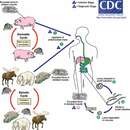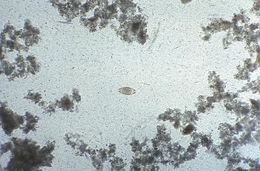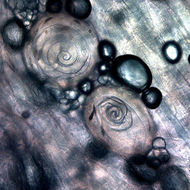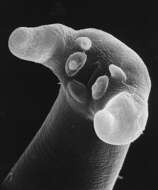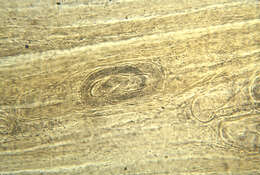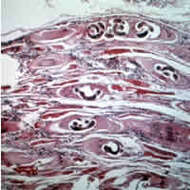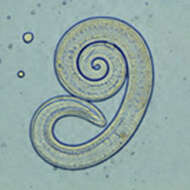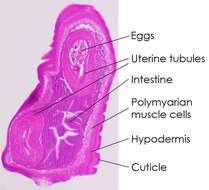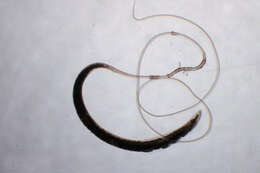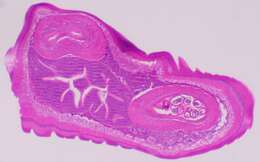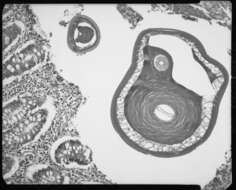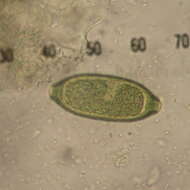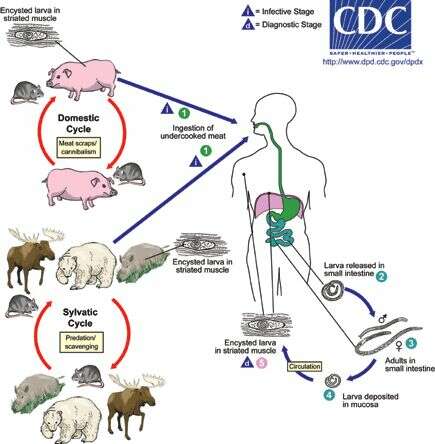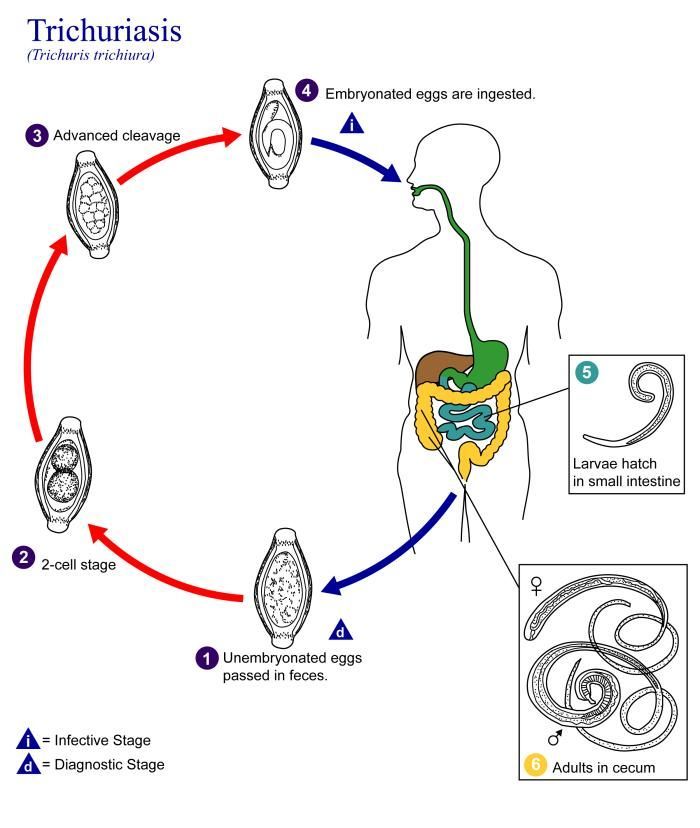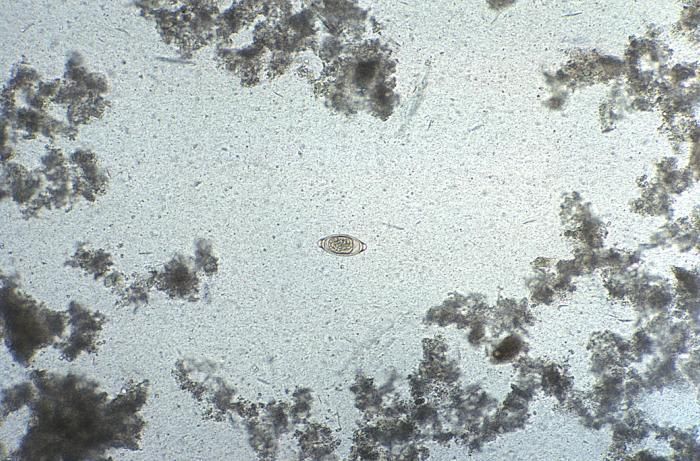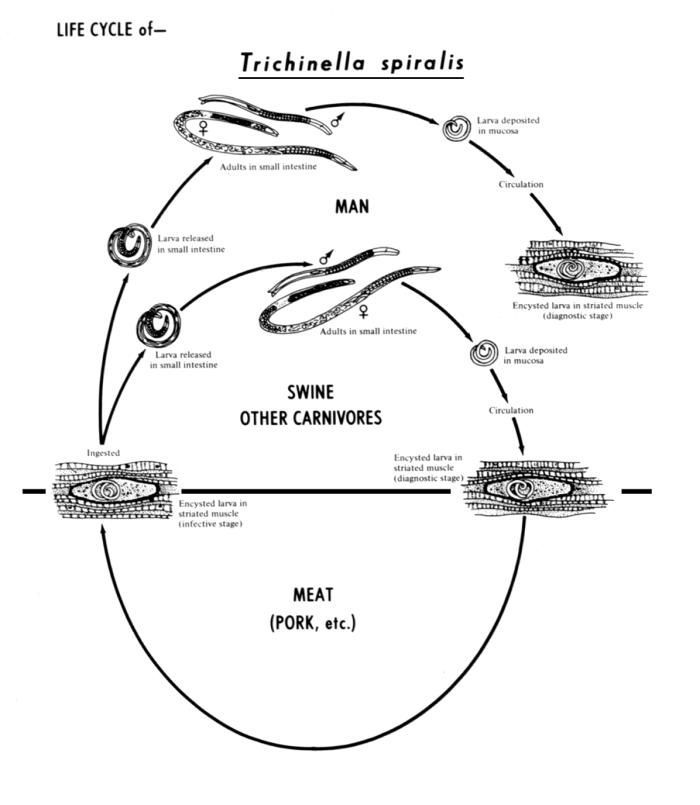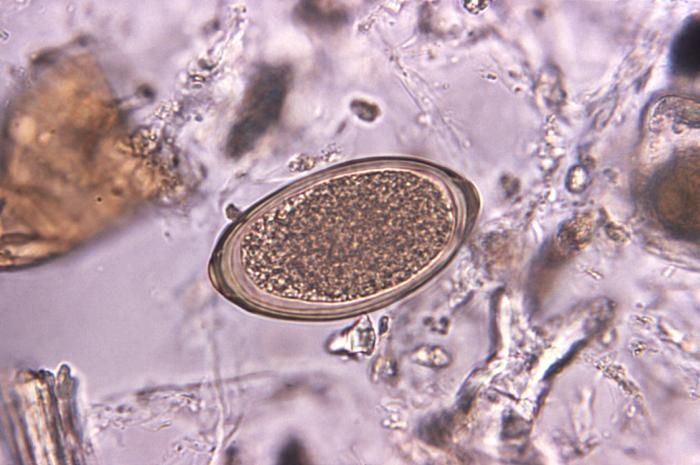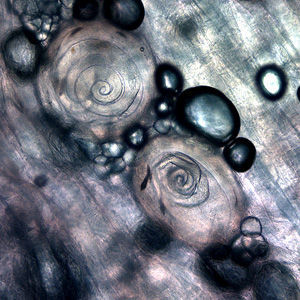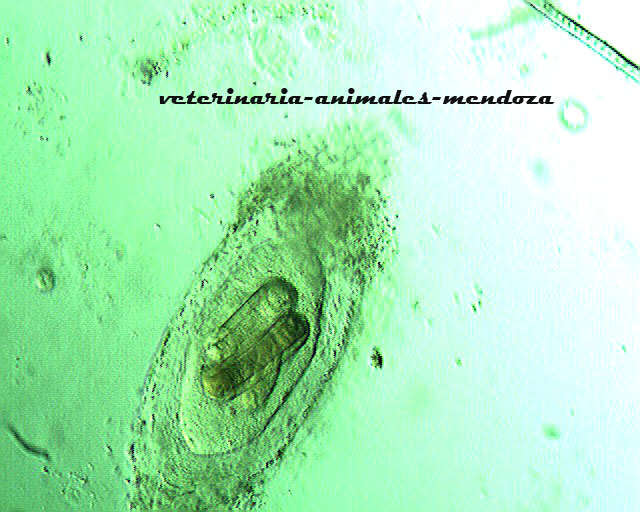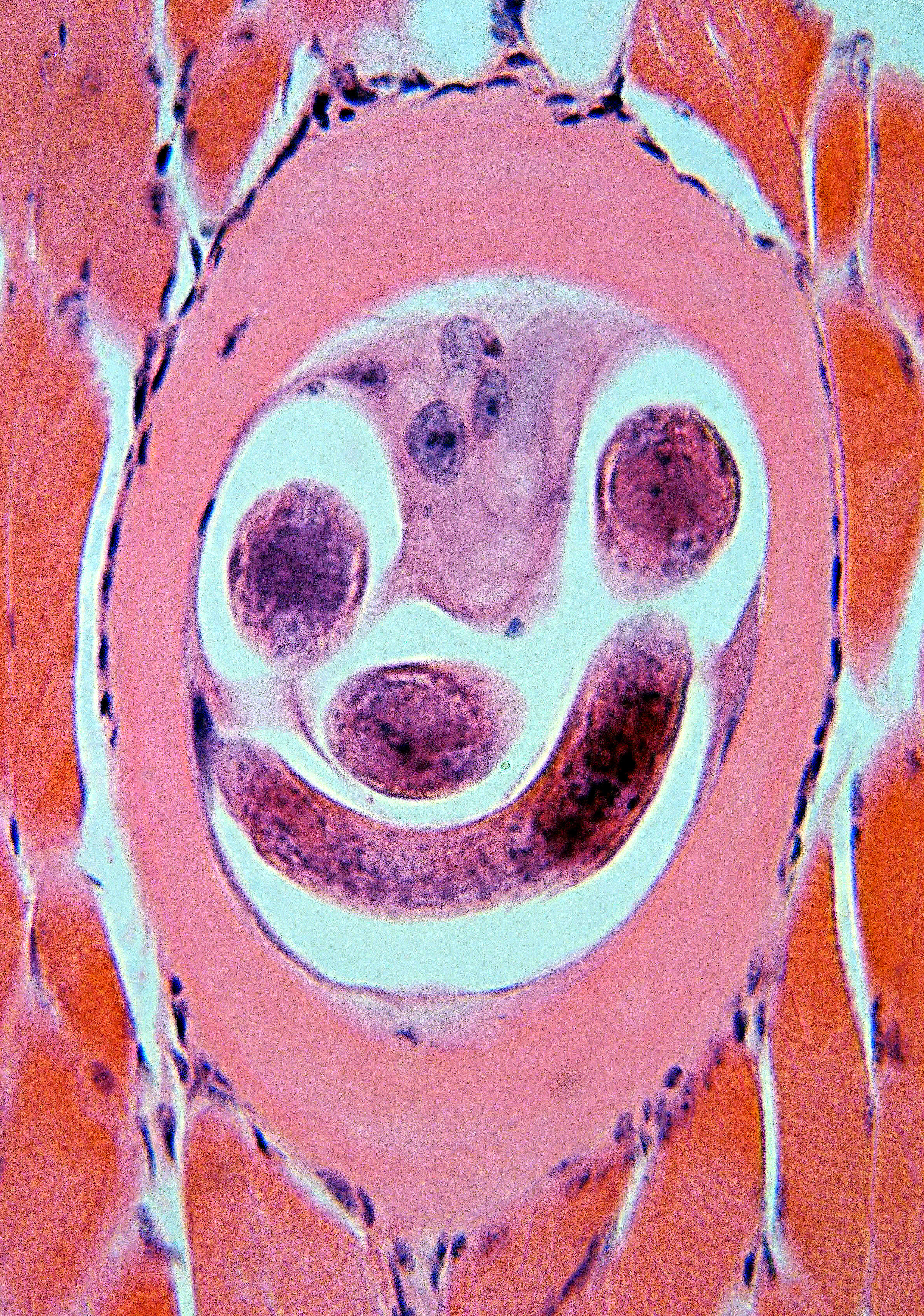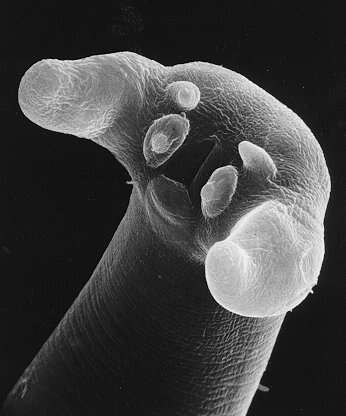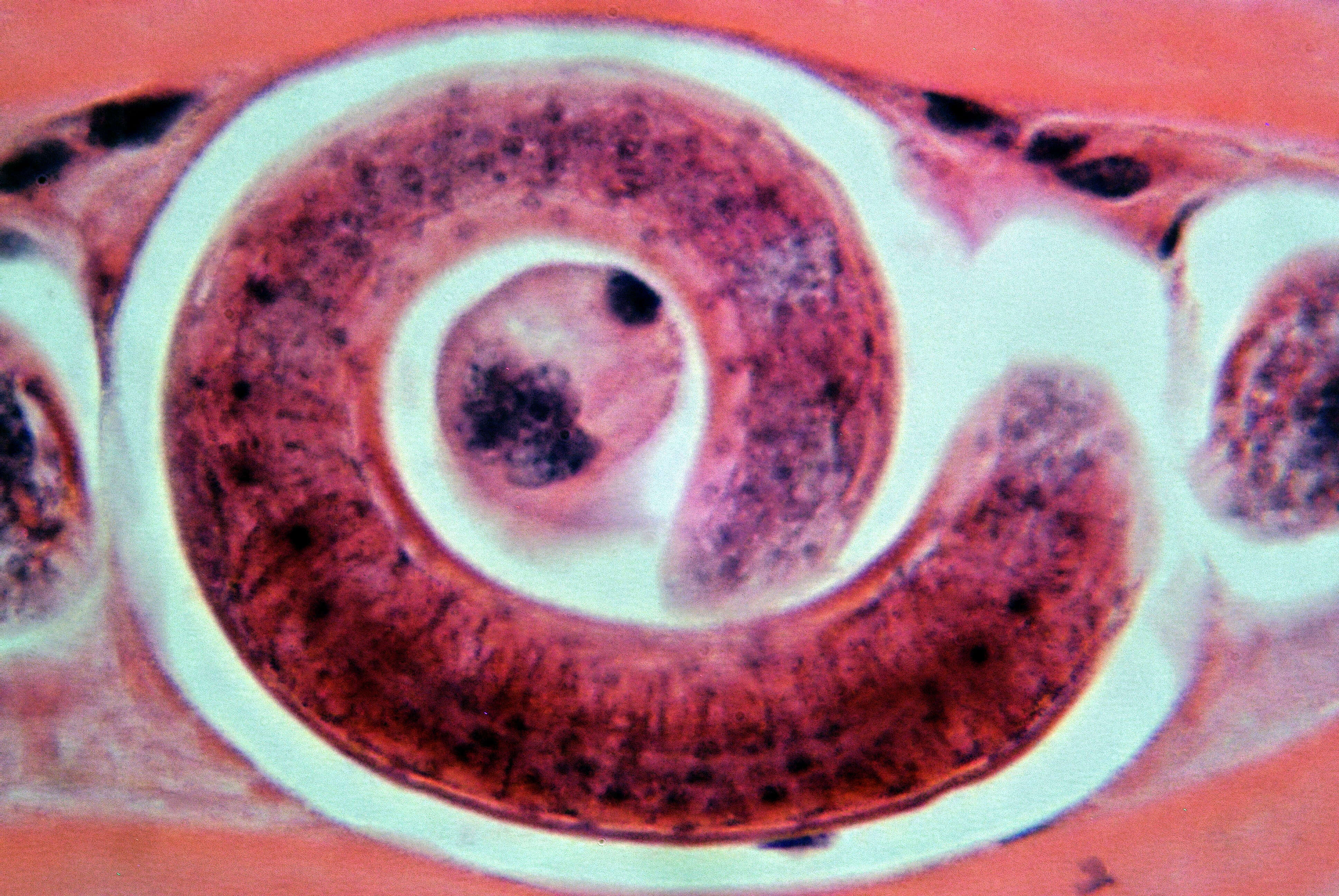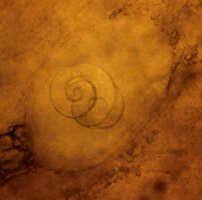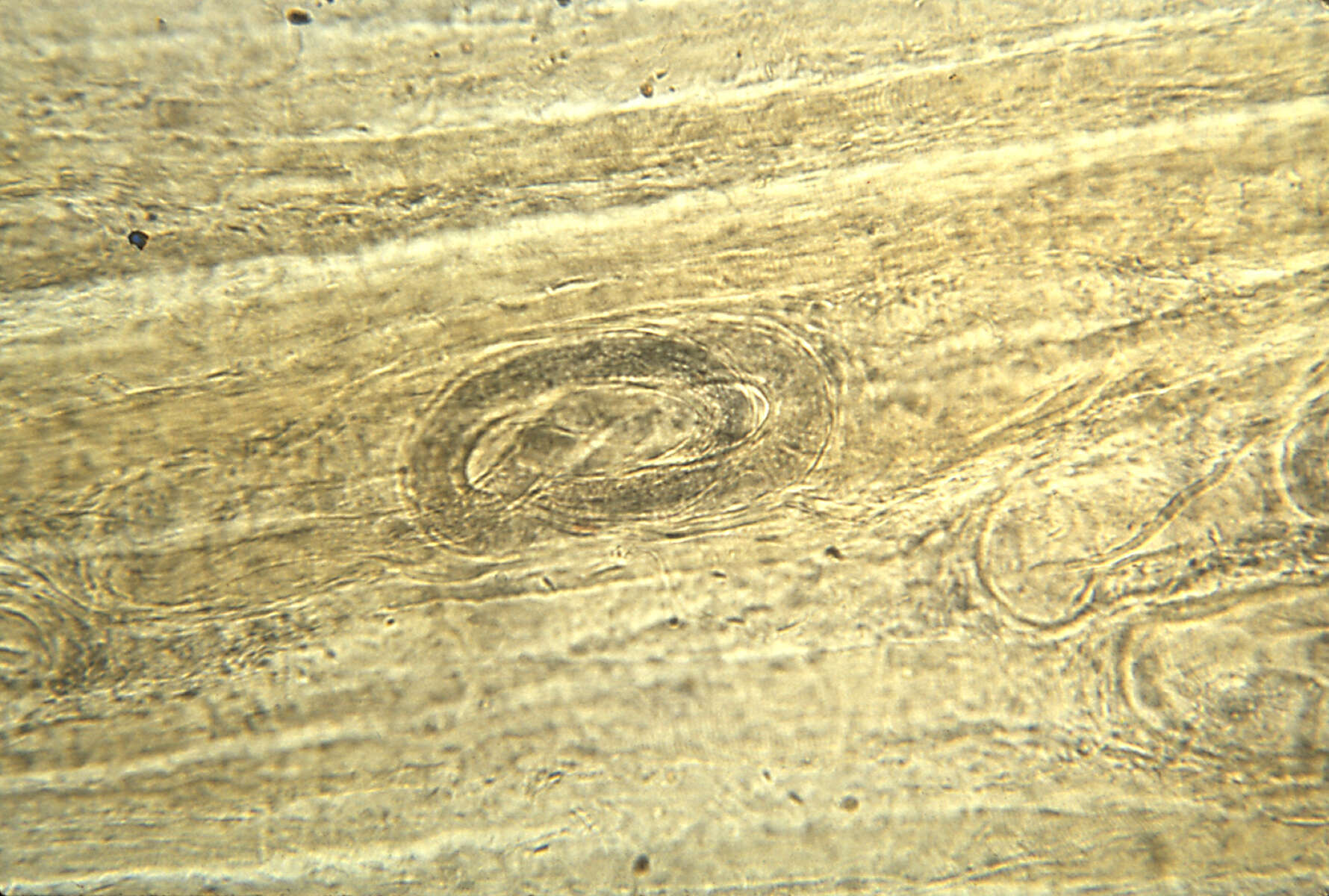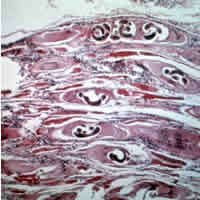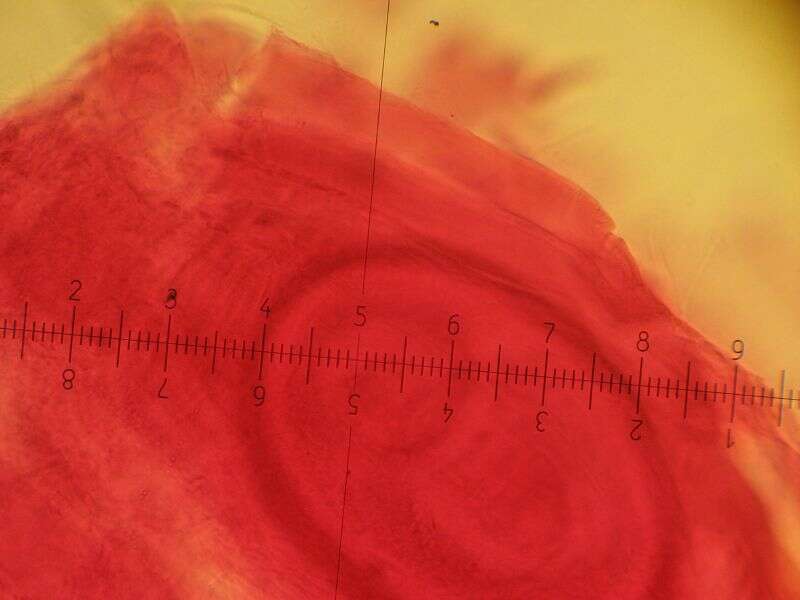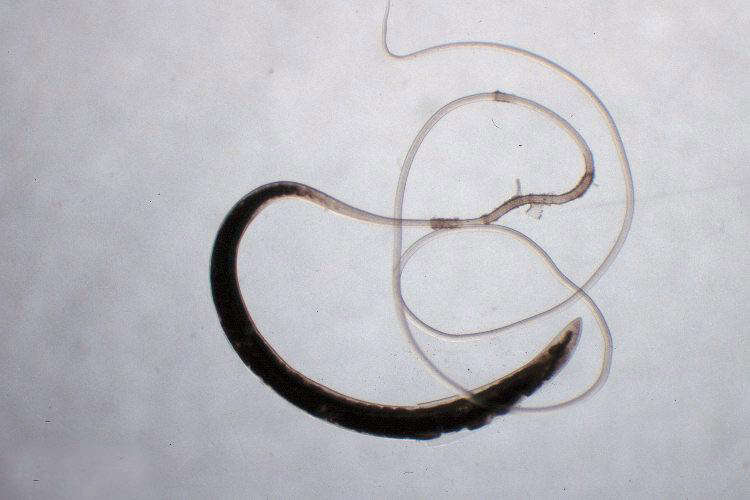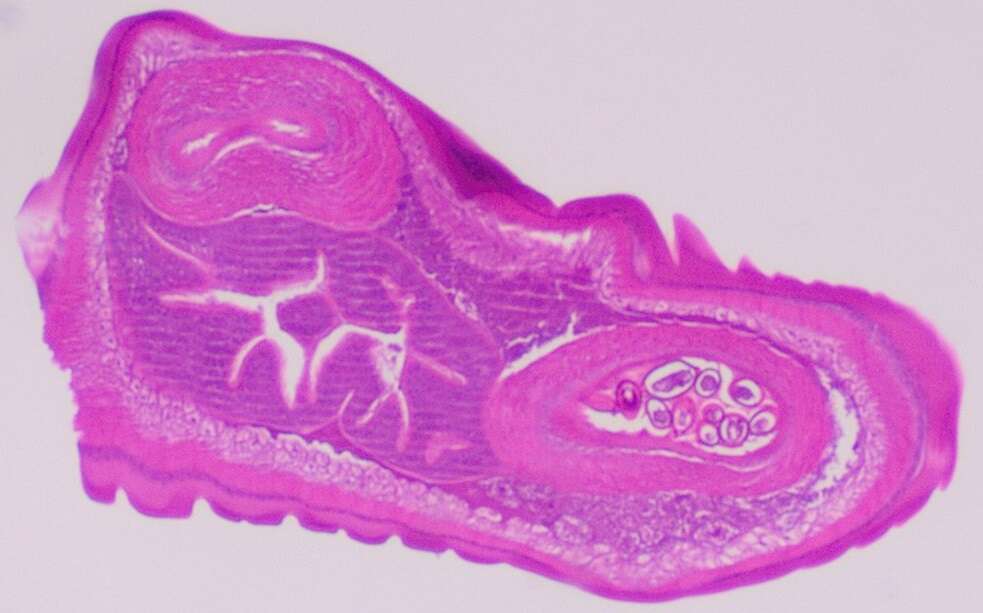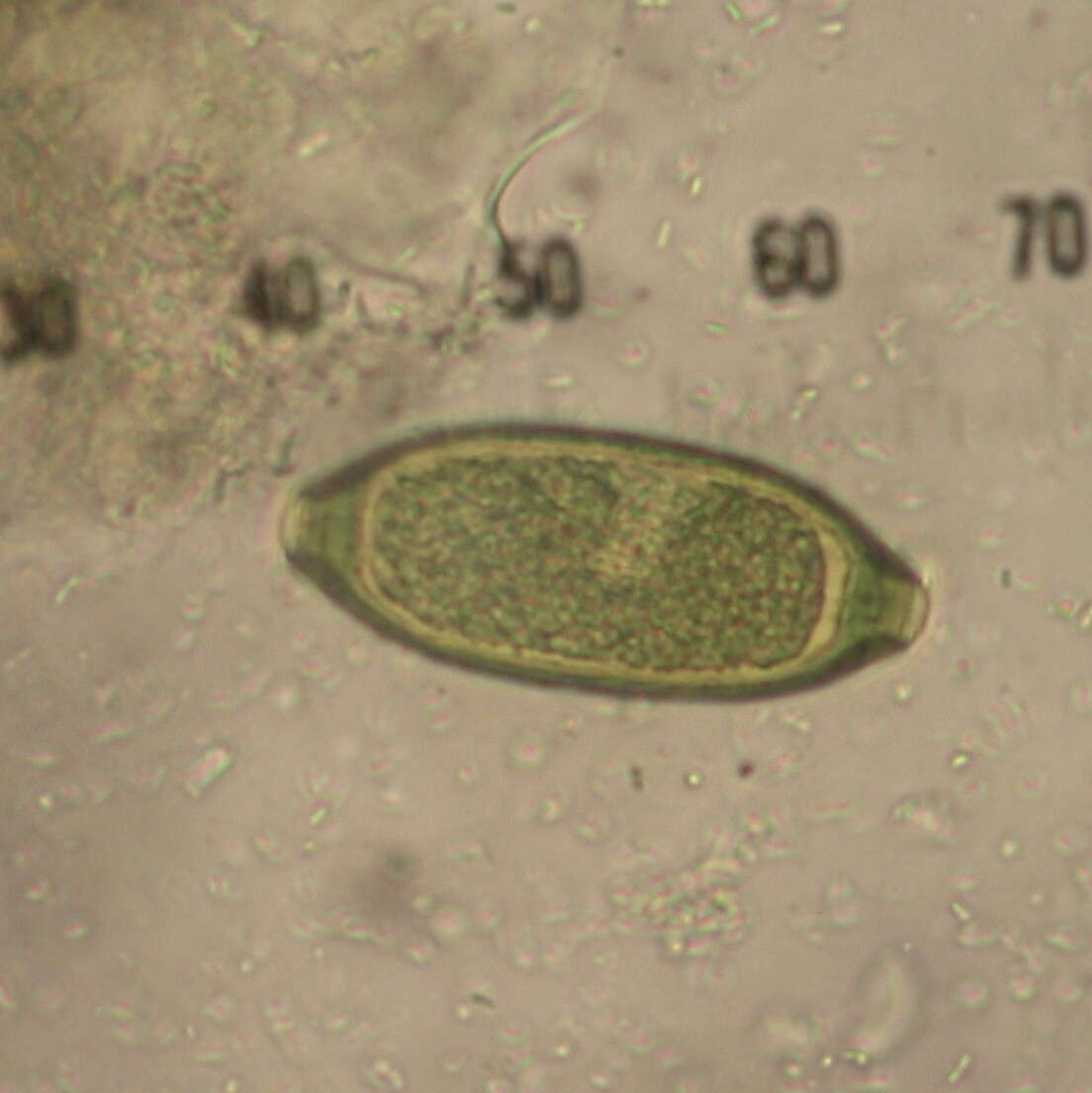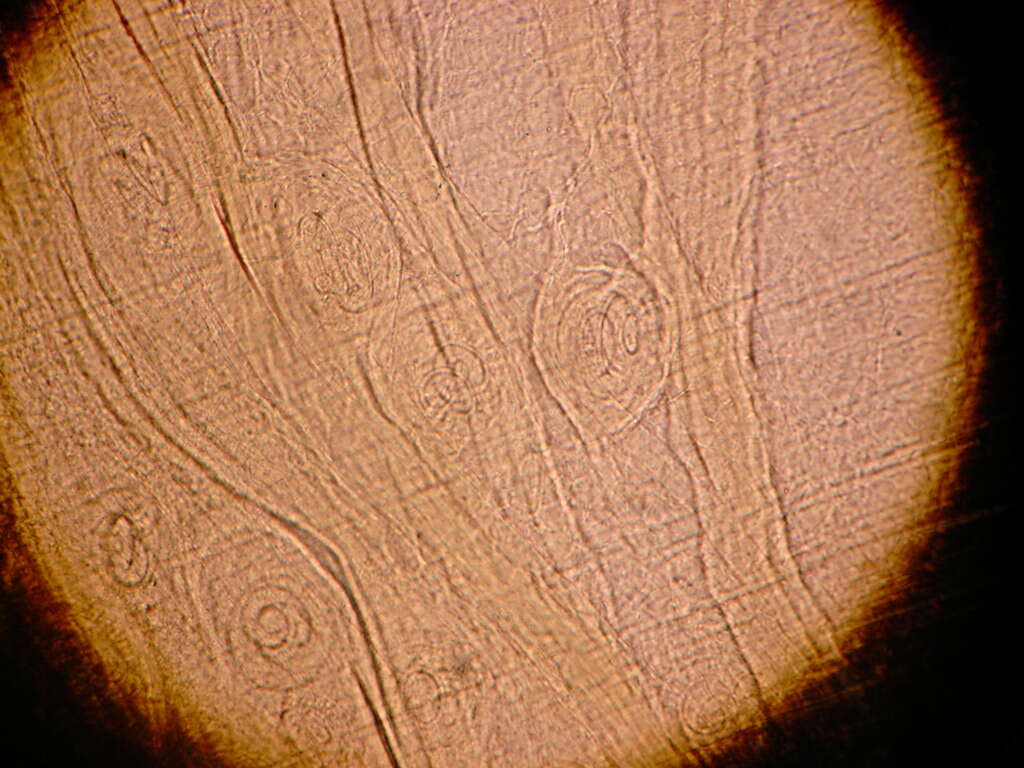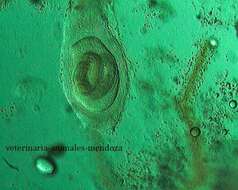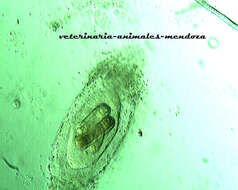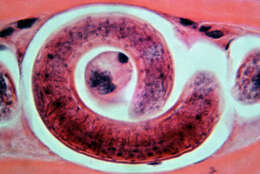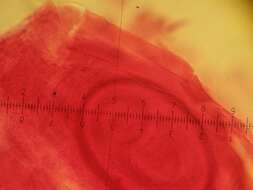Life cycle of Trichinella nematodes (roundworms), the cause of trichinellosis (trichinosis) in humansDepending on the classification used, there are several species of Trichinella (the nematode parasites responsible for
trichinellosis): T. spiralis, T. pseudospiralis, T. nativa, T. murelli, T. nelsoni, T. britovi, T. papuae, and T. zimbabwensis, all but the last of which have been implicated in human disease. Adult worms and encysted larvae develop within a single vertebrate host and an infected animal serves as a definitive host and potential intermediate host. A second host is required to perpetuate the life cycle. The domestic cycle most often involved pigs and anthropophilic rodents, but other domestic animals such as horses can be involved. In the sylvatic cycle, the range of infected animals is great, but animals most often associated as sources of human infection are bear, moose, and wild boar. Trichinellosis is caused by the ingestion of undercooked meat containing encysted larvae (except for T. pseudospiralis and T. papuae, which do not encyst) of Trichinella species (1). After exposure to gastric acid and pepsin, the larvae are released from the cysts (2) and invade the small bowel mucosa where they develop into adult worms (3). Females are 2.2 mm in length; males 1.2 mm. The life span in the small bowel is about four weeks. After 1 week, the females release larvae (4) that migrate to striated muscles, where they encyst (5). Diagnosis is usually made based on clinical symptoms and is confirmed by serology or identification of encysted or non-encysted larvae in biopsy or autopsy specimens.From
Centers for Disease Control Parasites and Health website.

